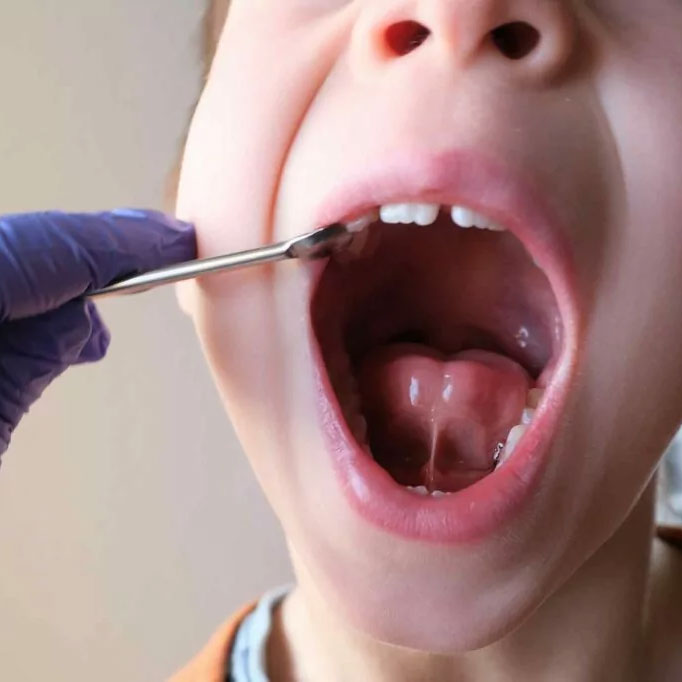What is a Frenectomy?
Frenectomy is a minor surgical procedure that is used to treat a lip or tongue tie. It can be used to increase the range of motion of your tongue or to close a gap between two teeth. A frenum that is too short or too tight can cause oral health issues and interfere with speech. In babies, it can cause issues with feeding and swallowing. Depending on the site of the procedure frenectomies can be classified as labial gums or lingual (tongue) frenectomy.
Your tongue is connected to your mouth by the lingual frenum. The lingual frenum varies in length from person to person. In some cases, people are born with a very short lingual frenum. This shortened frenum restricts tongue movement. (Tongue-tie).
The labial frenum connects your upper lip to the gum tissue above your front teeth. If this frenum is shorter than average, it can cause difficulty in speech development.


Freedom of Speech Improves
Improves Function

Permanent Solution
Who needs a frenectomy?
Frenectomies are performed on babies who are having feeding problems or have speech problems due to tongue tie or lip tie.
Frenectomies are necessary for adults, too. For example, sometimes a frenum can be so tight that it pulls your gums away from your teeth. This leads to diastema (a gap between your teeth), which may be unsightly to some people.
Gum recession can result in gingivitis, cavities, and mobility.
Brushing or oral care can cause pain, swelling, or tenderness.
What are the different types of frenectomies?
Oral frenectomies are classified into two types:
- Lingual frenectomy: This procedure removes or modifies the band of tissue that connects your tongue's underside to the floor of your mouth. Tongue-ties are treated with lingual frenectomies.
- Labial frenectomy: This procedure, also known as a maxillary frenectomy, removes the band of tissue that connects your upper gums to your front teeth. Lip ties are treated with labial frenectomies. Labial frenectomies can also be performed on the lower lip, but upper lip frenectomies are more common.
Frenectomy procedure:
- The frenulum is removed with scissors/lasers in infants. This is usually quick and only takes a few minutes.
- Local anaesthesia may be used to numb the tissue around the frenum in older children and adults. Once you're at ease, they'll use a scalpel or surgical scissors to remove or modify your frenum.
- Sutures (stitches) may be required in some cases to close the incision. The procedure usually takes 30 minutes or less.
Laser frenectomy:
A laser frenectomy is very similar to a traditional oral frenectomy. The only difference is that a laser is used, which reduces the risk of infection and blood loss.
Post care after frenectomy:
- Please do not use your fingers or tongue to touch the surgery area.
- Do not pull down the lip or cheek to examine the area, and do not have someone else examine it.
- A drinking straw should not be used because the suction may dislodge the blood clot.
- Extremely hot foods should be avoided. Cold foods, such as ice cream or shakes, are acceptable as long as they are consumed with a spoon.
- Smoking and alcohol (including beer and wine) should be avoided until after your post-operative appointment.
- Avoid sleeping or lying down on the affected side.
Benefits of frenectomy:
- Improves infant breastfeeding issues.
- Improves tongue-tie-related speech problems.
- Reduces your chances of developing tooth decay, gum disease, and other oral health issues.
- Eliminates gaps in your smile to improve its appearance.

